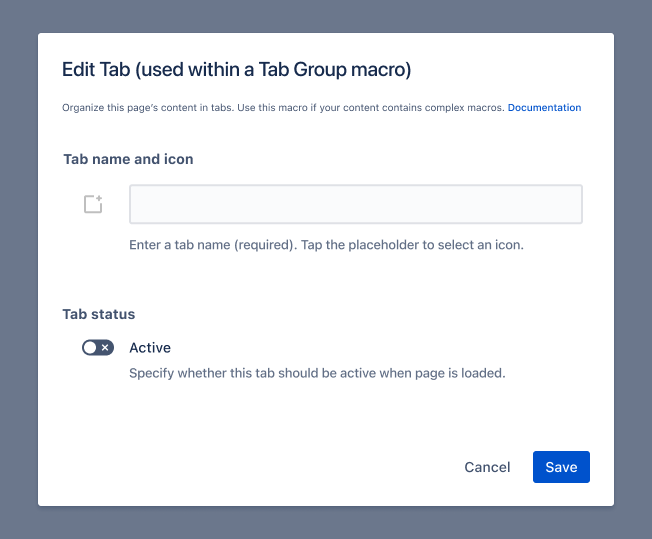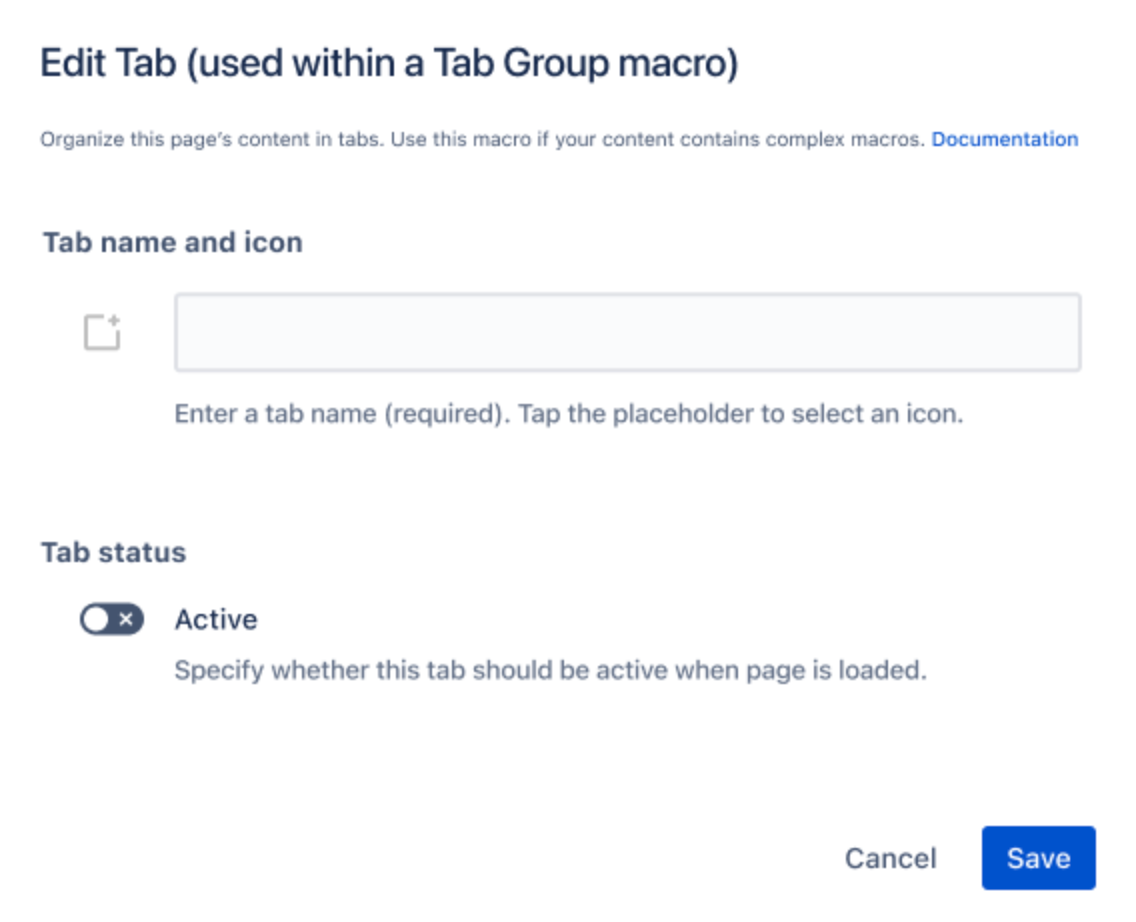Tab Macro
The Tab macro structures your page's content in tabs. This macro must be used within a Tab Group macro.

When to use Tab Macros
This macro is helpful if you want to:
Structure your long Confluence page to prevent excess scrolling.
Place additional information in tabs instead of displaying them in the main content (eg, related pages, Child Display, Jira issues, Page Properties Reports, or other macros).
![]() This macro was formerly called "Localtab (New Editor) Macro".
This macro was formerly called "Localtab (New Editor) Macro".
How to use Tab Group and Tabs macros
Add a Tab Group macro to a page.

Place the cursor inside the Tab Group macro. Add a Tab (used within a Tab Group macro) macro.

Give your tab a title and close the macro editor. Note: the tab title will only appear once you have published the page.

Position the cursor right behind the Tab macro and tap Enter.
Enter your content below the Tab macro.

To add another tab, place the cursor below the content you have just entered. Add another Tab macro and add the new content below.

Save the page when you are done.
The resulting tabs look like this:

By default, the content of the first tab is displayed when the page loads. If you want the second tab's content to be displayed, edit the Tab called "Second Tab" and tick the box labeled "Active".
If you prefer vertical tab navigation, edit the Tab Group macro and enable the toggle "Display the tabs vertically." Note that the preview will not change here; the tabs will only be oriented vertically once you have published the page.
To customize the tab icon, click the placeholder next to the tab name to browse for the desired icon.

Linking to a specific tab
By default, the first tab and its content is displayed when a tabbed page is loaded. If you want to link to another tab instead, proceed as follows:
Create the tabs and their content.
Publish the page.
Click on the tab you want to be active when the page is loaded. This will change the Confluence URL and add a hash, so it will look something like this: Your+Page+Name#8394215a-b9f7-4b2a-8c58-0b0d47eed0d4
Copy the entire URL and paste it in other Confluence documents. The smart link will display the entire hash, so you may want to edit the link text manually.
Please note:
Using this URL will not scroll to the selected tab content. It will only select a specific tab and display its content.
This will not work for nested navigation; it’s impossible to link directly to a tab that lies in the content of another tab.
